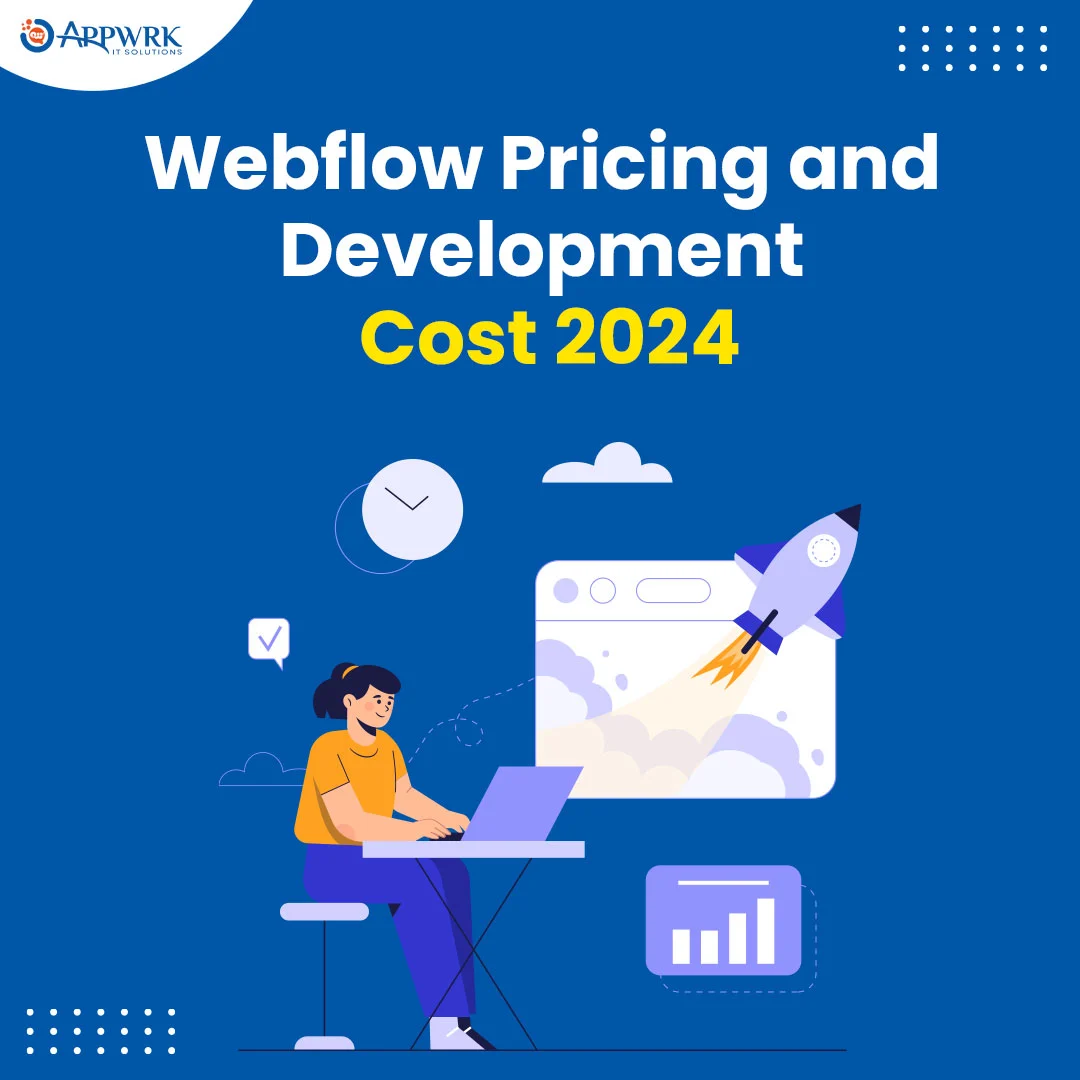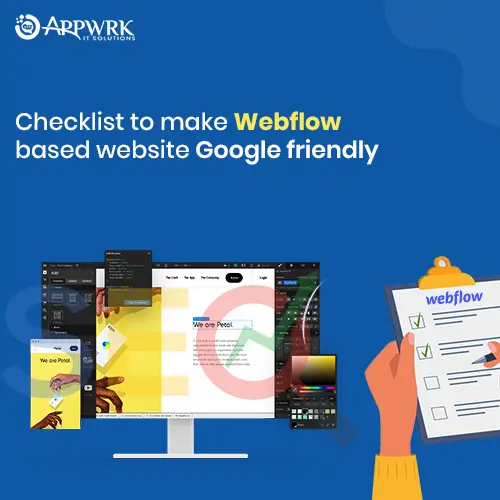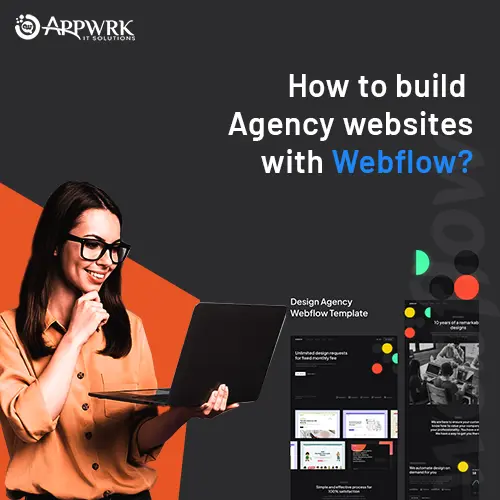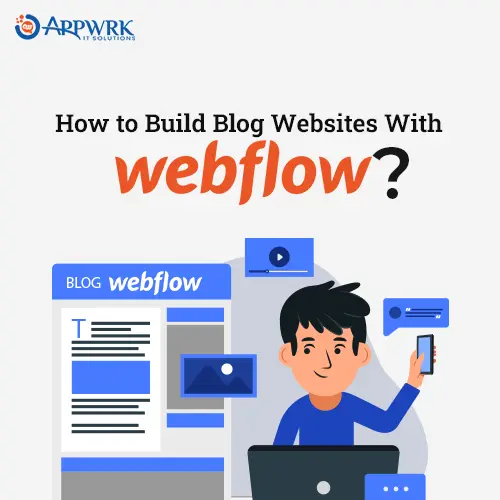What is Webflow? Features and Benefits of Webflow in 2024
In 2024, Are you looking for a no-code website builder or considering migrating your website to a different CMS? If so, you’re at the right place. Webflow is here to help you out.
There are thousands of website-building tools that exist in 2024, but Webflow has taken a crucial place in the website-building market. It is undoubtedly a next-generation hosting platform, making it the topmost choice for 3.5 million businesses, teams, and designers.
With Webflow, designers can create scalable and stunning websites without having technical know-how. It spares them time for essential tasks while attracting more audiences.
In this blog on “What is Webflow,” we will understand Webflow meaning and go into the details like its features, benefits, and reasons to choose Webflow over others. We will also provide a comparative study of Webflow with other CMS tools. So, let’s dive in and cover the basics of Webflow through this article.
Table of contents
What is Webflow?
Whether you’re a prolific blogger or an enterprise owner, you can create seamless websites with Webflow.
Webflow is a visual website builder and editor that lets you design, build, and launch your website just by clicking, dragging, and dropping different elements, like pictures or text, onto a page. It combines the power of HTML, CSS, and Javascript and helps you build a website without any need for coding. So, this allows you to focus on the front end of the design rather than struggling with the complex codes.
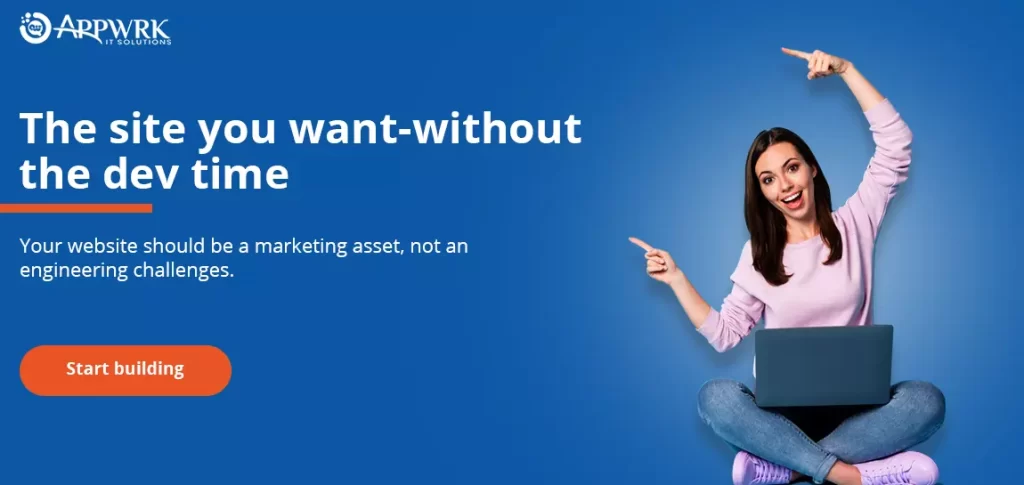
Webflow CMS acts as an all-in-one design platform with an easy-to-use visual interface. It’s the go-to solution for those who want to create the latest websites. With Webflow, users can:
- Craft interactive experiences through animations.
- Manage diverse content effortlessly through a comprehensive CMS.
- Sell a wide range of products with eCommerce functionalities.
- Access an active community for quick issue resolution and troubleshooting.
- Swift website performance to captivate and retain users.
- Ensure website security, safeguarding user and business information.
It’s now time to dig more into Webflow.
Build Best-in-class Webflow Websites.Top Quality. Affordable. Highly Converting. 24*7 After Support.
What is Webflow Used For?
Webflow is a dynamic and versatile web development platform that helps to design, build, and launch websites without necessarily having to write code from scratch. It blends the power of visual design with coding, making it an ideal tool for both designers and developers. Webflow aids in building a wide range of websites, including one-page sites, portfolio websites, business and marketing websites, SaaS platforms, Ecommerce sites, and user-generated content websites.
Let’s also understand why people use Webflow:
- Webflow offers a visually intuitive platform that simplifies the web design process, making it accessible for both beginners and professionals.
- Another big advantage of Webflow is that it allows users to design websites without the need to write complex codes.
- Webflow provides powerful CMS (Content Management System) features that help in handling a variety of content types.
- It offers extensive support resources, making it easier for users to learn and troubleshoot.
- The drag-and-drop interface makes the website easy to use and speeds up the creation.
Top 6 Webflow Features in 2024
Visual Design Tools – No Coding Required
Webflow’s visual design tools are a standout feature, especially for those who prefer a more intuitive approach to web design. Unlike Wix and SquareSpace, Webflow allows you to customize every design. In other workspaces, designers sit and write a series of codes. But, with Webflow, you can sit and see how your website appears with drag-and-drop items in your visual canvas.
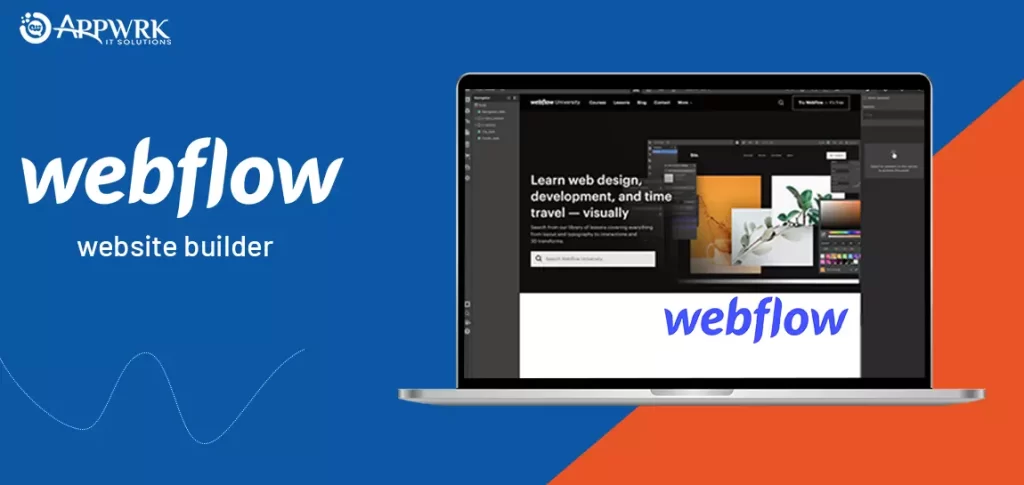
Webflow lets you customize code to change layouts according to your preferences. The best part is, reusing desired CSS classes in whichever design you want. It saves your crucial code-writing time for another design. Not only this, you can change components, text, photos, and colours that suit the page best. The Webflow interface gives you instant visual feedback for better designs and appearance.
Responsive and Mobile-Ready Web Design
Imagine making your website ready for desktop, and it adapts well on smartphones as well. It is, too, with no extra effort. Webflow provides responsive ready designs with just a click. Webflow designers need not do extra iterations to fit their websites on different screens. The platform automatically adjusts your layout to provide an optimal viewing experience on desktops, tablets, and smartphones.
Next, mobile users have a short attention span due to space constraints. If the website opens slowly, they’ll leave the website then and there, increasing the bounce rate. Therefore, websites with fast speed rates are more than necessary.
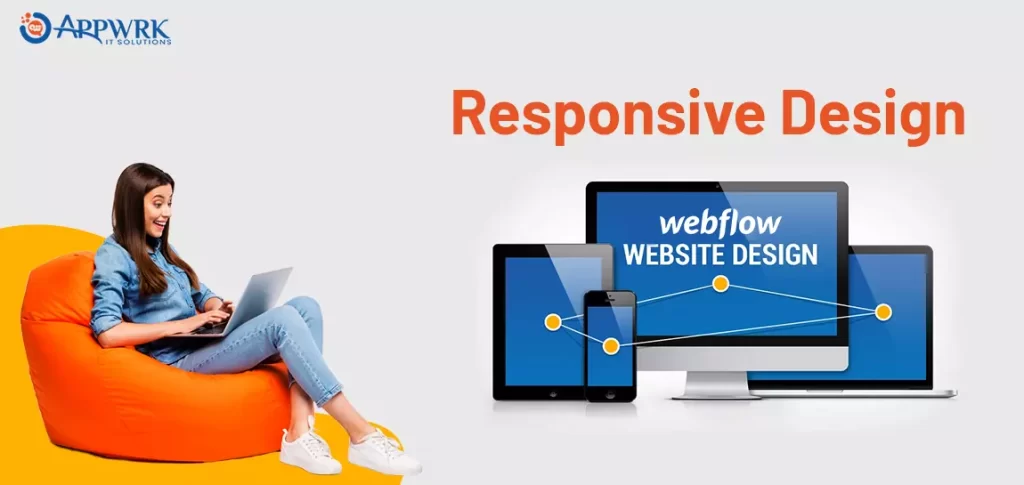
With Webflow, you get 5x faster sites. It is due to the fastest content distribution network (CDN) for hosting. Instant page load times and the lowest bounce rates are no more a dream. Webflow allows you to preview your site on different mobile screens. You can make it mobile-friendly and get higher Google rankings.
CMS Integration in Webflow
Gone are the times when one design fits all the content pages. Content-heavy sites can survive if designers are innovative enough to suit the design as per content requirements, not the other way around. For example, selecting the appropriate images and backing them with quotes, GIFs, and infographics to illustrate what content is all about.
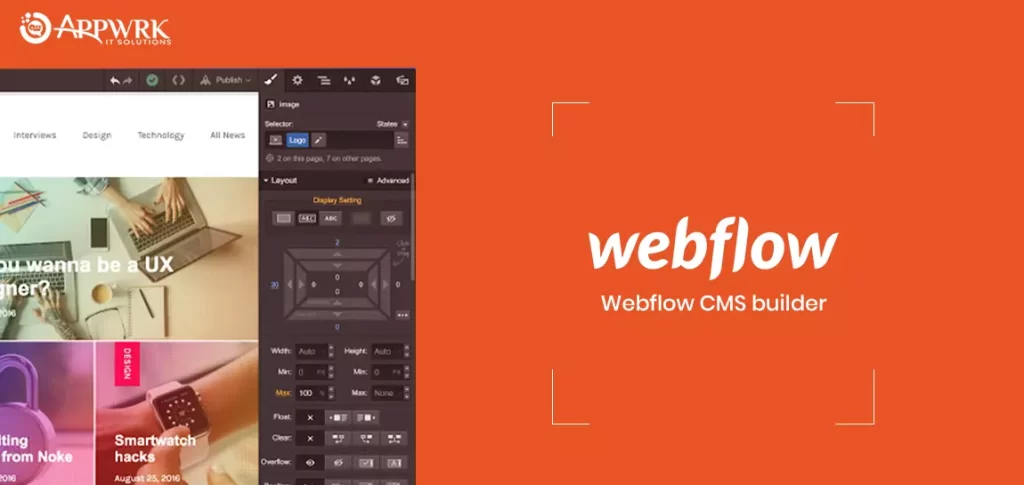
Webflow makes this task super easy. Content Management System (CMS) integration in Webflow allows users to manage large amounts of content. Some of the benefits of CMS integration with Webflow are as follows:
- Easy to use without any technical complexities.
- Provides visual editing environment, ensuring real-time previews before publishing content changes.
- Integrates SEO-friendly features for enhanced content visibility and improved search engine rankings.
- Offers custom designs to create unique web pages without writing a single line of code.
- Identifies designs that customers want, centring around the content instead of what you think.
- Saves time and costs associated with content management with its intuitive interface.
Ecommerce Functionality
Do you have unique products and services that you want to sell your way? Webflow provides the best solution for the same. Webflow’s e-commerce functionality provides a comprehensive solution for building online stores. This feature integrates seamlessly with the rest of the platform, allowing you to design your store visually while managing products, inventory, and transactions.
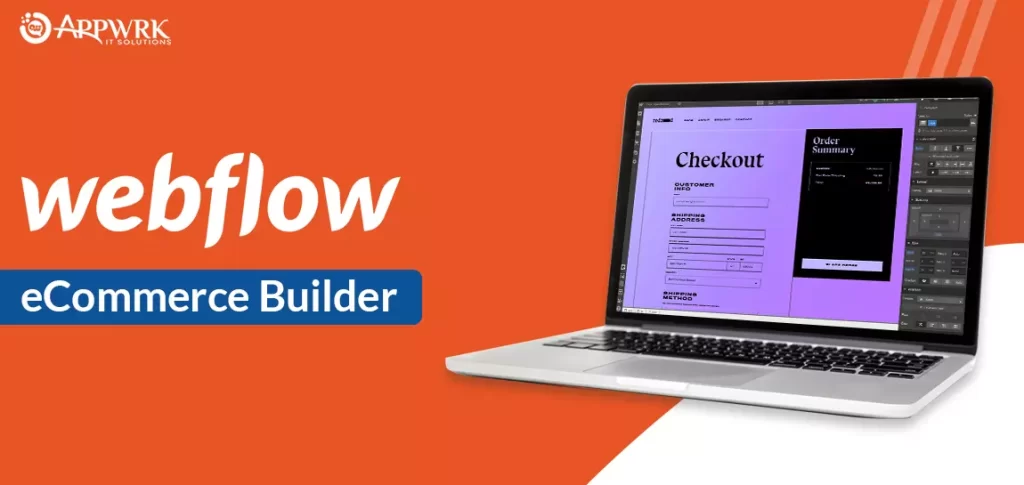
With Webflow, you can:
- Go for interactive eCommerce experiences and animations in your voice.
- Illustrate your images, text, and features using Webflow product fields.
- Customize checkouts for smooth purchases. Also, Webflow has many payment options for easy transactions.
- Integrate it with other services, such as Zapier.
- Stay on top with custom delivery options, social linking, and order history.
- Integrate with Google Analytics for online traffic monitoring for your ecommerce website.
Therefore, the level of integration and customization provided by Webflow makes it a strong contender in the e-commerce space.
SEO Optimization
Search Engine Optimization (SEO) is a critical component for the success of any website. Webflow offers a comprehensive set of tools designed to enhance your website’s SEO, ensuring better visibility and ranking in search engine results.
Let’s see how Webflow helps in SEO optimization:
- Webflow generates high-quality, search engine-friendly HTML and CSS code.
- Easily add and edit meta titles and descriptions for SEO enhancement.
- Add alt tags to images in a simplified manner, improving SEO for image searches.
- Supports the integration of structured data for creating rich snippets in search results.
- Allows creation of clean, descriptive URLs and efficient management of 301 redirects.
- Easy integration with Google Analytics and Search Console for tracking and improving SEO performance.
Webflow Hosting
Webflow hosting allocates you space for storing your files on the webserver to be live online. With Webflow, your website gets world-class speed, security, and customer trust. These are the steps:
- Start with a free account.
- Get your custom domain name.
- Choose the appropriate site plan for you, such as basic, CMS, business, or enterprise.
- Scale your website for more page views and users at a time.
Webflow hosting helps you update your website with a click within no time. Further, it comes with 301 redirects, XML sitemaps, and SSL certification. Also, you can integrate tools like Google Analytics to streamline marketing.
What Benefits Does Webflow Bring?
Webflow has in-store benefits for all segments. Let’s peep into how Webflow is beneficial for designers, customers, and businesses.
Webflow Designers
Let’s see how Webflow is an ideal choice for designers.
- Visual editor and code exist in one place.
- Webflow has a comfortable drag-and-drop interface to edit designs.
- The design, content and development team can work together with a fully functional website.
- Saves time on producing prototypes, website mocks and creating Photoshop images.
- Focuses on how to produce better interactions and animations rather than writing code from scratch.
Check out these amazing 15 best websites every designer should visit in 2022

Webflow for Customers
When you talk about customers, they need fast, high-performing, and engaging websites. Let’s see why your customers will love Webflow sites:
- Webflow sites perform exceptionally well on mobiles.
- Customers can easily share their websites with other people.
- The landing pages and websites built by Webflow are highly interactive helping customers to better understand products and services.
- Customers can easily explore different web pages in seconds and look into various options they are looking for.
- Security is what customers can’t compromise on. Webflow websites are highly secure.
Webflow for Businesses
Webflow offers unique functionalities to all businesses, whether it is a startup having brilliant ideas or a fully functional business. Some of the benefits Webflow provides to businesses are:
- Teams can focus on marketing rather than coding.
- It provides the fastest hosting and the least page load times.
- Offers customizable themes and templates as per niche and industry.
- Zero Website downtime to retain customers in all the time zones.
- Able to scale website to accommodate n number of users.
Know the Winner
Webflow vs WordPress: which is better in 2023-2024?
How Does Webflow Work?
Do you think a good website appearance is enough to attract visitors? No. Webflow helps your customers understand the products, services, and company to the core. It is possible with text interactions, appealing visuals, and icons for branding and user association.
For holistic Webflow website design, you must follow certain steps to get the desired results. Let us understand the webflow process in 7 simple steps.
Step 1: Define Website Goals and Objectives
You definitely can’t proceed further with the Webflow design if you don’t have defined website goals and requirements. Ask yourself these questions before proceeding further:
- Who is my target audience?
- What is the website’s purpose? It is to educate, entertain, or sell products.
- How to represent your brand? The core brand message and unique selling points.
- Do you expect your customers to increase in the near future? You can go for scalable design.
- Who are my competitors? What is the marketing strategy they are using?
Step 2: Set Realistic Boundaries and Deadlines
Now, you have some concrete website design goals in your hands. However, setting achievable deadlines and boundaries is essential to manage the project effectively. If you do not have fixed deadlines, then website design won’t be completed within the set time. So, specify your milestones and deadlines in which you can probably work. Establishing milestones encourages you to proceed further easily.
You can also make use of tools, such as
- Gantt chart
- Network diagram
Webflow eases all these steps by cutting out the agile design cycle.
Step 3: Site mapping and Wireframing
Site mapping and wireframing help you visualize how your website looks. Plan site structure (site mapping) creates a visual representation of its pages, content hierarchy, and navigation flow. This helps to establish relationships with different Webflow pages and create website architecture.
Wireframing involves creating basic sketches or layouts that represent the placement of elements (such as text, images, and buttons) on different pages. These wireframes serve as a blueprint, guiding the design process and content placement.
Webflow provides you with an opportunity to design interactions and create page hierarchies.
Step 4: Develop and Organize Content
Content is the central part of website creation. Content development includes writing copy, creating images, videos, or any other media elements required for the website. Without meaningful content, you won’t be able to convey your brand message and what your product means to users. It drives high customer interaction and engagement. So, what does it aim for?
- You can grab visitors’ attention with appealing visuals, create suitable content, select the right typography, and enhance the readability of the content.
- Use natural SEO techniques to aim for higher search engine rankings and to address customer pain points.
Webflow CMS is the right answer to building exemplary content and designs. For SEO, Google Keyword Planner, Google Trends, and advanced SEO work quite well.
But if you are serious about maximizing your website reach to your targeted audience, you will be required to do its advanced search engine optimization. Don’t worry, APPWRK IT Solutions has a team of digital marketing experts sitting just right there for you.
Step 5: Design Visual Elements in Webflow
Visual elements are necessary to enhance the meaning of the content that you have written. In Webflow, you can optimize your images and make them responsive. Furthermore, you can add image alt text to illustrate what your images want to convey. Webflow’s design capabilities allow for extensive customization without the need for coding.
Step 6: Perform Testing and Check if the Website Works Well
Testing is crucial to ensure the website functions as intended and provides a seamless user experience. Webflow has a visual editor for website testing, and you can customize code if required. Go to Webflow link settings to adjust external and internal links.
Furthermore, optimize the website for speed, SEO, and accessibility. This involves optimizing images, implementing SEO best practices, ensuring mobile responsiveness, and addressing any performance issues. Also, check out if all links are working nicely with SEO spider tools.
Or you can Hire the best Website testing experts for your website.
Step 7: Launch the Webflow Website
Once testing and optimization are complete and the website meets the defined objectives, it’s time to launch. The beauty of the Webflow website is, that it makes constant required changes to the website to enhance its performance, and zero maintenance is required.
If you want to know in detail about – How to Build a Webflow Website from Scratch, check out the simplest and most updated article on the Internet on this topic.
Is Webflow Free? Webflow Pricing in 2024
Choosing the right Webflow pricing plan may be sometimes cumbersome. However, Weblow provides a wide range of pricing plans depending on your goals and requirements. It provides plans ranging from individuals to big enterprises. Let’s break down the pricing plans and get a quick overview.
Site Plans (General)
- Starter Plan: Free
- Basic Plan: $14/month (billed yearly); $18/month (billed monthly)
- CMS Plan: $23/month (billed yearly); $29/month (billed monthly)
- Business Plan: $39/month (billed yearly); $49/month (billed monthly)
- Enterprise Plan: Contact the Webflow team
Site Plans (Ecommerce)
- Standard: $29/month (billed yearly); $42/month (billed monthly)
- Plus: $74/month (billed yearly); $84/month (billed monthly)
- Advanced: $212/month (billed yearly); $235/month (billed monthly)
From the above pricing plans, it must be clear that Webflow’s site plans are designed to cater to a wide array of website requirements. The plans range from a basic setup suitable for small projects to more advanced options for content-rich and business sites.
To know about Webflow Pricing Plans and Costs in detail, dive into our blog “How Much Does It Cost To Build a Webflow Website?”
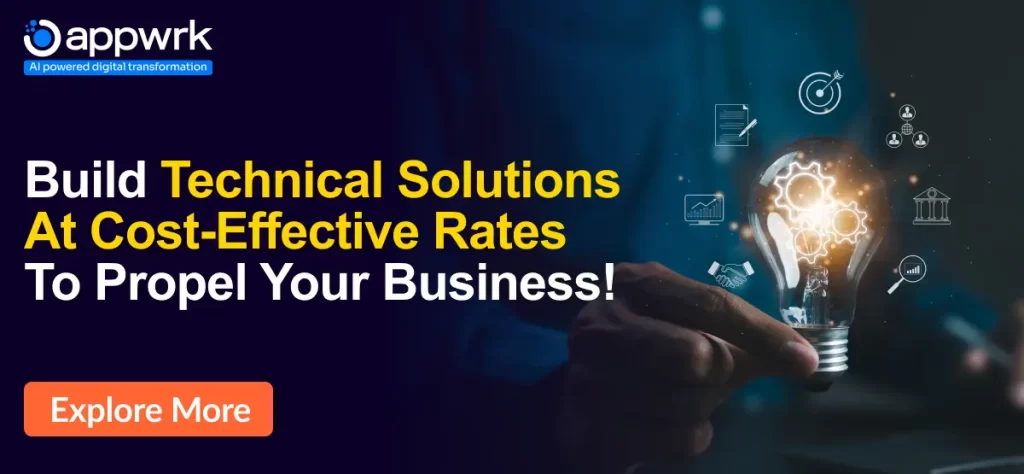
Webflow Alternatives in 2024
Now, let’s look at some of the best Webflow alternatives that are available in 2024.
Webflow vs WordPress, Which is the Best?
In comparing Webflow and WordPress, Webflow stands out for its visual-first design interface, offering granular control without extensive coding. It’s an all-in-one platform, simplifying design, hosting, and content management. Conversely, WordPress, known for its vast theme and plugin ecosystem, requires more technical know-how for customization.
Webflow emphasizes visual design, catering to designers and businesses seeking intuitive control, while WordPress suits a broader user base, providing extensive customization options but with a steeper learning curve and maintenance needs.
The choice hinges on design control preferences and technical expertise, with Webflow excelling in visual design and WordPress offering diverse customization through its extensive ecosystem.
Here’s a concise comparative table highlighting the key differences between Webflow and WordPress.
| Webflow vs WordPress: A Comparison | ||
|---|---|---|
| Aspect | Webflow | WordPress |
| Design Interface | Visual-first design, less reliant on coding | Requires customization through themes and plugins |
| Platform Type | An all-in-one platform integrating design, hosting, and CMS | Open-source with extensive theme and plugin ecosystem |
| Ease of Use | Intuitive visual design interface; moderate learning curve | More user-friendly for basic setups; steeper learning curve |
| Customization | Extensive design control without heavy coding reliance | Highly customizable through themes and plugins |
| Flexibility | Offers granular design control; emphasizes visual aesthetics | Flexible but requires more technical knowledge for changes |
| Target Users | Appeals to designers and businesses seeking visual control | Suits bloggers, small businesses, and larger website needs |
| Cost | Higher cost, especially for additional features or e-commerce | Generally more cost-effective, though costs can escalate |
| Maintenance | Simplified all-in-one solution; less maintenance required | Requires regular updates and maintenance for optimal use |
Webflow vs Squarespace
The two website-building tools, Webflow and Squarespace represent two distinct approaches to website creation.
Webflow targets designers and businesses seeking intricate design control. It offers a visually-driven platform, enabling users to create highly customizable and responsive websites without extensive coding.
It’s an all-in-one solution, integrating design, hosting, and content management, ideal for those desiring granular design freedom.
Squarespace, on the other hand, focuses on simplicity and ease of use. It’s geared towards individuals and small businesses seeking a user-friendly platform.
Squarespace provides pre-designed templates and a guided interface for quick website setups. While it offers a more streamlined experience, it provides slightly less customization compared to Webflow.
It suits those who prefer a straightforward and approachable website creation process but with fewer intricate design options.
Therefore, the choice between Webflow and Squarespace depends on the user’s priorities.
Webflow vs Wix
Wix is another popular solution other than Webflow, WordPress and Squarespace.
Both Webflow and Wix feature user-friendly drag-and-drop templates, ideal for those without coding expertise. However, both tools have some significant differences.
Webflow caters to both novices and experienced developers. While beginners can easily navigate the interface without coding skills, experienced developers leverage its HTML/CSS capabilities, extensive customization, on-page editing, and advanced features to craft custom-designed websites from scratch.
In contrast, Wix relies heavily on templates, boasting 800+ designer-made options. Users select from diverse templates for quick website setup, but customization options are comparatively limited.
Both platforms offer drag-and-drop ease and diverse plans. However, Webflow stands out for its flexibility, while Wix prioritizes template-based simplicity for quick and varied website setups.
Advantage of Using Webflow in 2024
As we step into 2024, the advantages of Webflow have become more profound. From the above blog “What is Webflow,” you must have understood that Webflow is a one-in-all solution for your website building, content management, hosting, and much more. From beginners to seasoned developers, Webflow has connected everyone without the need for any coding expertise. It’s drag-and-drop simplicity and intricate design control makes it an ideal choice for both newcomers and experienced developers.
Moreover, if you want to develop a custom Webflow website – in No time and that too at an affordable rate, APPWRK IT Solutions is just one call away. We have the best Webflow Developers for hire, who are well-versed in creating innovative and tailored websites. Also, for any doubts, you are free to contact APPWRK. We will make sure that all your queries get solved in no time.
About The Author



